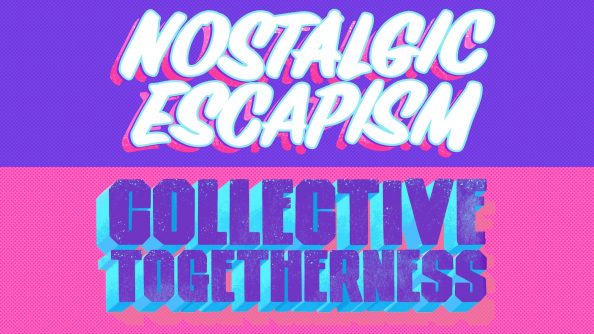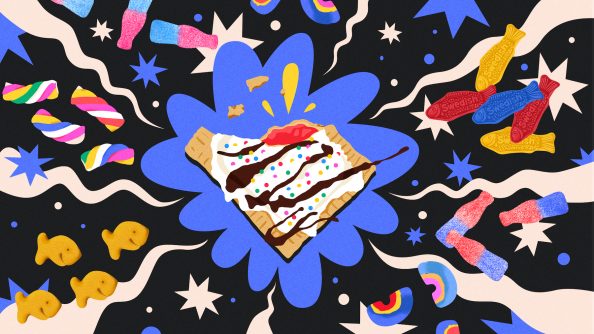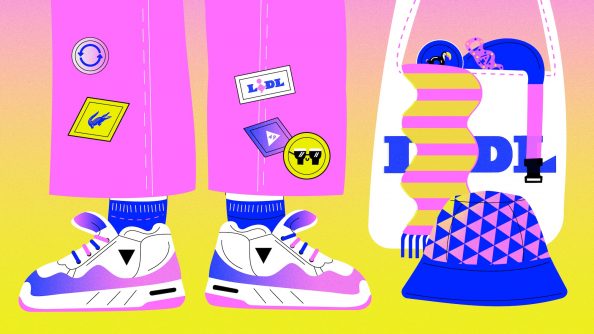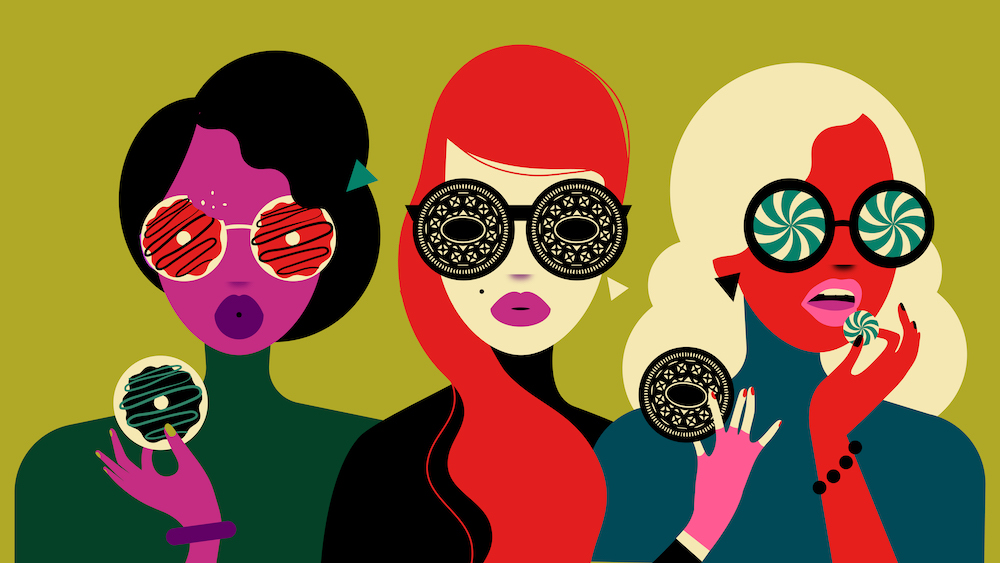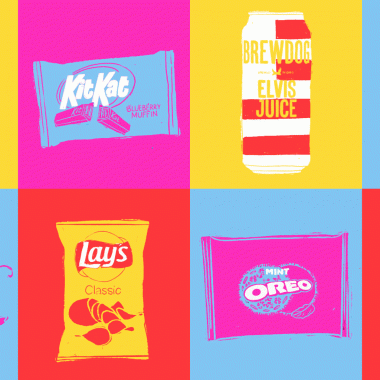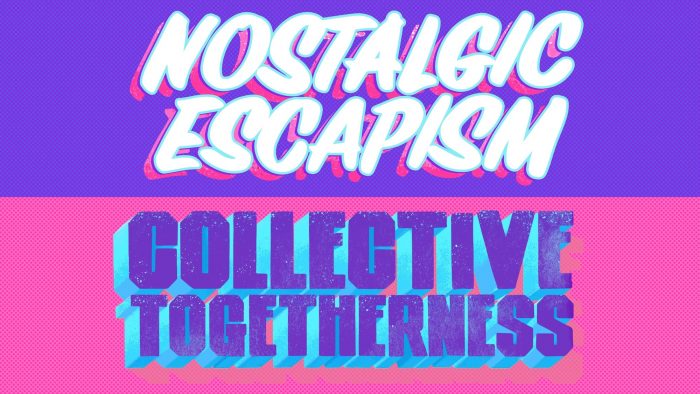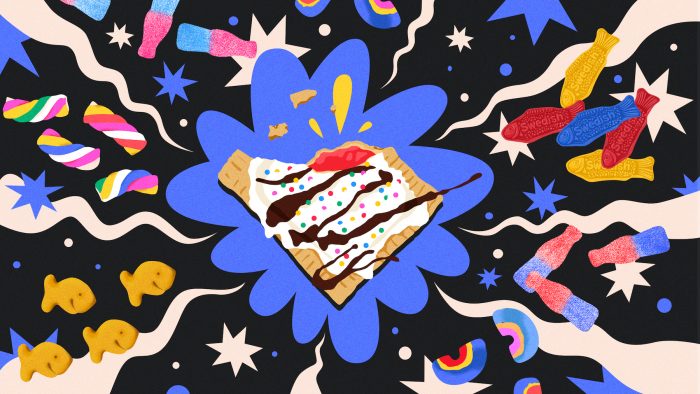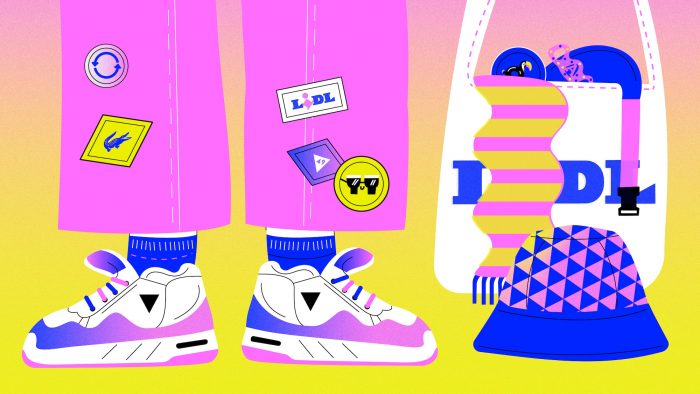Sweet or savory?
Super healthy, or a bit naughty?
On-the-go, or on the couch?
We are, of course, talking about snacks. The pandemic didn’t only disrupt how we live, work, and commute, but also how we snack. Today, people are snacking more than ever, with 64% of people replacing at least one meal with a snack. That is up 5% from pre-pandemic times, with even higher figures across Gen Z and Millennials. Welcome to The Snackaissance.
At Vault49, we take a Futures Approach to ensure we prepare our clients for tomorrow and stay ahead of what’s coming. In this article, we start by looking at the cultural drivers causing the shifts in consumers’ snacking behaviors and identify four emerging trends that snack brands can capitalize on.
Definition: “snack”
First things first. The Oxford Dictionary defines a snack as “a small amount of food eaten between meals”, but snacking today is more than just caloric content used to “fill a gap”. After deeply reconnecting with our communities and bodies during the pandemic, snacking has become much more. It is now a way of checking in with our primal selves in literal bite-sized pieces over the course of the day.
Generation Snack
Life stage plays a significant role in consumers’ snacking habits. 82% of people agree that snacks serve different purposes during different phases of life, and snacking habits vary across generational groups:
- Toddlers: We learn to snack young, and today’s parents know to pack lots of snacks for hungry young mouths whenever leaving the house. Or else. Jokes aside, grazing has become a real issue for today’s toddlers, resulting in a generation that often complains of being hungry (or, even worse, hangry) outside of traditional mealtimes.
- Kids: As we move up the age bracket a little, snacking makes up about 27% of kids’ caloric intake. This is a significant increase versus generations that came before them. Is the 3-meals-a-day model about to become redundant?
- Gen Z: Teens: Status has always mattered to the teen audience, in whatever generation they exist. Every brand choice that the younger end of Gen Z makes reflects the image they want to present to their peers and snacking has become the badge of the day around the lunch table. It’s all about curating a persona, snacks and all.
- Gen Z: 20s: At the upper end of the Gen Z cohort, the trend for snacking is more rooted in relieving anxiety and boredom, as they come to grips with adulting. Health and Wellness is an important driver with this group, so you’ll see more “natural” and less “processed” in what they choose to snack on. Overnight oats anyone?
- Millennials: Perhaps where Generation Snack really took off, this generation is most likely to use snacks to meet nutritional needs. Importantly, how and what this group snacks on has to fit in with their busy home, work, and social lives.
- Gen X: Comfort is the top motivator for snacking at this end of the generational scale, with taste and quality as the key drivers for their snack choices. They can afford ‘better’ and are willing to pay for it.
Given that snacking has become more important across all generations, one thing is clear: consumers want more choice – in format, flavor, nutritional and functional benefit – which means there are enormous opportunities for snacking brands.
Three Drivers Shining a Light on Tomorrow
1. Accelerated but Individual Lifestyles
In this post-pandemic moment, the world is moving faster than ever before. With snacking often used as a meal replacement, our snacks must be available wherever we are: on our commute, lounging in bed, and anywhere in between. With the rise in hybrid working and even more emphasis on digital connection and communication, what role can our snacks play in helping us better connect in real life AND digital spaces? Are there new ways to bond and share over snacks, whether watching sports events or in the early days of getting to know someone through a dating app?
2. Social Connection
Digital connection and communication also reflect how we live in a more global community than previous generations. We’ve written before about how consumers’ palates are becoming more sophisticated, with people always on the lookout for new ways to experience the world through what they drink, and it’s the same when it comes to snacking. Moving outside of local and drawing from the vast global snacking landscape, how will the next snacking flavor, texture, and experience look? How will snacks cross geographical borders, and how will cultures collide to create new and exciting things for us to nibble on?
3. Sustainability & Conscious Snacking
Of course, sustainability also comes into play. As we see firsthand how our planet is deteriorating, we have to come to grips with the reality that our choices are contributing factors, especially when it comes to our consumption habits. People are increasingly questioning how they can make a difference with their snacking choices but still live life to the fullest. This is reflected in everything from new-to-world snack brands set up specifically to give back to people and the planet, to established brands switching to more sustainable ingredients, production methods, and packaging.
Four Trends Driving The Future of Snacking
With all of this in mind, we’ve identified four emerging trends driving growth across the snacking category.
1. Indulgence Re-imagined
Following the comforting (and often nostalgic) reliance of snacking on junk food during the pandemic, brands are beginning to re-imagine all of our favorites, but without all of the bad stuff. By using better-for-you ingredients, these emerging brands create fun, playful, yet guilt-free snacks and treats that don’t compromise flavor or pleasure.
When you look at the semiotics around these new brands, they lean heavily into the vibrant and disruptive world of brand design, particularly beloved by the Gen Z audience. Glonuts is a perfect example, offering a range of vegan, keto, and celiac-friendly donuts, all wrapped up in branding full of 90s references, neon pastels, and Y2K aesthetics.
2. Snacking Gets Personal
As people become savvier about what they put in their bodies, they’re also seeking out new ways to accommodate ever-expanding dietary requirements and consider the mood-boosting potential of what they consume. Powered by AI, new snacking business models deliver individualized experiences that focus on emotional and mental nourishment and physical. Erbology, for example, offers a personalization service based on understanding customers’ specific tastes, physical and mental health goals, lifestyle, and dietary restrictions, providing a range of snacks curated just for them.
3. Snacks That Align With My Values
To meet the rising demand for brands to align with consumers’ values, transparency around sustainability, innovation, philanthropy, and social impact is becoming more common in the snacking aisles. This is also where we see one of the most significant shifts in design. Here, branding and packaging prioritize messaging around brand values and purpose over the ingredient and flavor cues you’d expect to see jumping out at you on shelf. B-Corp logos are everywhere, while brands like Neutral, the first carbon-neutral food company in the United States, states its mission to radically reduce the carbon footprint of agriculture loud and proud across its packaging.
4. Snackertainment
Snacks are also moving front and center in the entertainment world. 62% of global consumers say that they enjoy food content on social media, which rises to 82% when you segment to Gen Z. Alongside cooking and baking content on social media, snack-making has become a new way for people to connect, elevating mindless munching to an engaging, creative, and sometimes even competitive multi-platform experience.
Singapore’s leading online supermarket RedMart is a brand leading the way. Through its Facebook Live cooking show, viewers can order the celebrity chef-created dishes they see being made online, or collect all of the ingredients from their local store so that they can cook along at home. In the US, Walmart has introduced a “Trending on Tik Tok” section to many of its stores, complete with all-important celebrity endorsements.
To Snack, or not to Snack
Put your consumer hat on for a moment. Next time you reach for that pack of chips, the latest flavor of your favorite candy bar, or a new vegan protein snack, consider why you are making that choice. How has snacking become part of your lifestyle and daily routine? What is really driving your snack decision?
Whether you choose a comforting old favorite in place of a meal, something new to excite your palate and expand your culinary horizons, or you just need a little pick-me-up to power you through your next Zoom meeting, how we snack is evolving, and by understanding broader cultural trends and influences, we can see where the world of snacking is heading next. The next great Snack could be just around the corner. Will your brand be part of it?
Leading a snack brand? Interested in exploring these cultural drivers, emerging trends, and the semiotics around what the future of the category will look like? Get in touch to arrange time for us to present The Future of Snacking to you and your team.
anna
Meg Asaro, Head of Strategy & Nicole Prefer, Strategy Director
